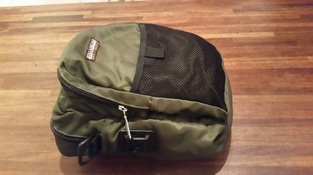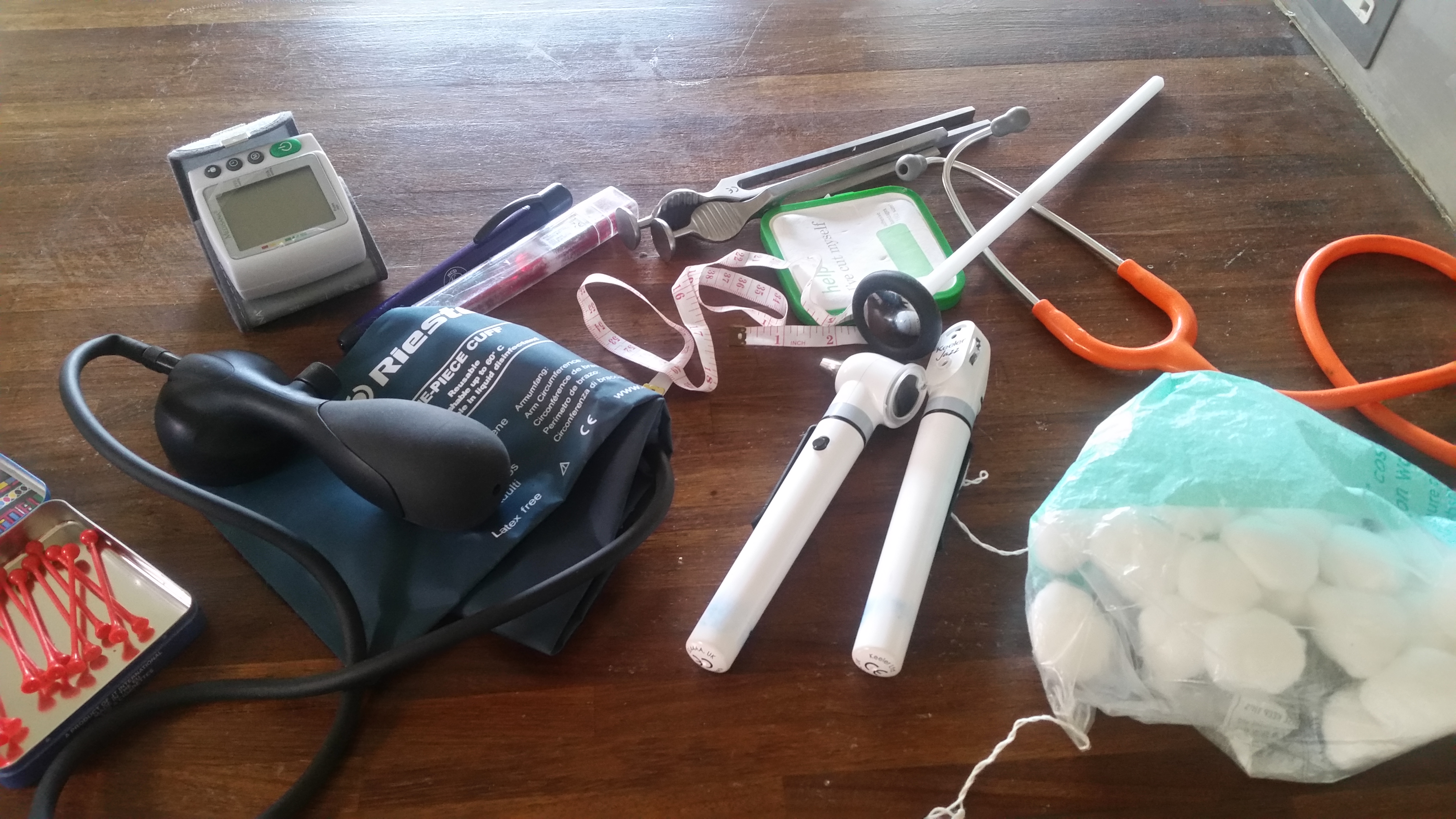 If you see me walking to and from Vauxhall, Oval or Nine Elms you'll notice that I am carrying a large and well stuffed rucksack. As well as a laptop, a couple of gowns for those patients who require one and an emergency kagoul it contains a green man-bag filled with very important things. I rarely need to use most of them and they weigh altogether almost as much as my laptop and take up an annoying amount of space. What is in this man-bag that is so important that I lug it around despite almost never needing it? The manbag contains my clinical medical kit. Inside there is:
I always ask new patients about their general health at their first visit. Asking questions about urinary continence may seem invasive and irrelevant to someone who has come in with back pain but it may be that the patient has dangerously compressed nerves in their spinal canal and further sensory and motor testing may add weight to this hypothesis. Headaches may be related to a neck dysfunction or could be something more sinister which may be implicated with a cranial nerve test. I was very grateful to have the kit this week. A patient who I have been treaing for some time and who has neck pain which is almost certainly due to mechanical injury and resultant inflammatory process but who also suffers dizziness and is therefore treated as though it might not be, had been to see another medical professional who had taken the blood pressure in both arms and found the diastolic pressure wildly 40mmHg different, they had declined to treat her and were writing to the GP. There are a number of potential reasons for wildly varying pressures but amongst them is aortic disection. This can be catastrophic and can present with jaw, neck and shoulder pain as the patient was reporting. Without the kit I would have had to refuse treatment also. I checked the pressure twice with the anaroid sphygmanomometer and once to confirm with the electronic device. The diastolics were similar and normal and, whilst the systolic was slightly higher one side on the electronic reading it was a normal difference. I did an abdominal exam to check for a spreading abdominal pulse and found nothing abnormal. Coupled with the fact that the jaw pain was a recurring condition over several months I felt confident to continue gentle treatment. So why was the other reading so different? I wwasn't there but the likelihood is that the other reading was taken in a position where perhaps the venous return from the arm was being temporarily compromised by a tight muscle, perhaps pec minor. My testing has allowed me a degree of confidence in my patient's underlying health that has allowed me to treat them and in this case to greatly reduce their pain, nevertheless it is possible that their is something seriously wrong that is only exhibiting intermittently and for that reason I will check both arms for the next few visits and support the other professional's assessment that she should see her GP.
0 Comments
|
Archives
February 2024
AuthorDamian is the principal osteopath at Vauxhall Village Osteopathy and Oval Osteopathy Categories
All
|



 RSS Feed
RSS Feed


